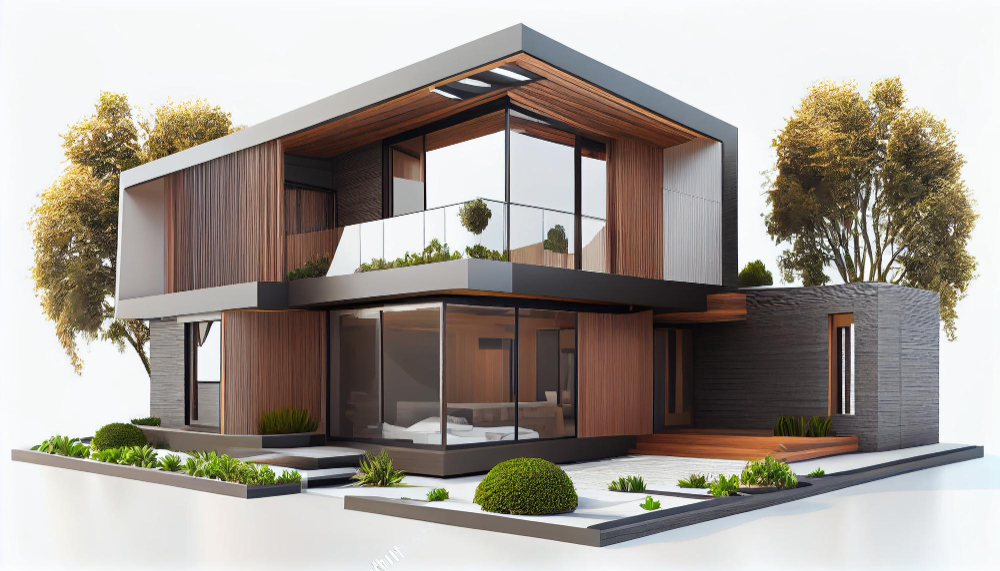What is Architecture?
Architecture is much more than the art of designing buildings; it is a profound expression of human civilization and a reflection of cultural values. At its core, architecture serves both functional and aesthetic purposes, shaping the environments in which we live, work, and play. It encompasses the technical aspects of building construction and the creative endeavor to make spaces that are both beautiful and sustainable.
The Evolution of Architectural Styles
From the sturdy columns of ancient Greek temples to the soaring spires of Gothic cathedrals and the sleek silhouettes of modern skyscrapers, architectural styles have evolved dramatically over the millennia. Each era brings its own technologies and aesthetic ideals, shaping buildings that reflect the priorities and aspirations of the time. For example, the Renaissance period revived classical aesthetics and symmetry, which can be seen in the proportional perfection of the Vitruvian Man by Leonardo da Vinci.
Famous Architects and Their Legacy
The history of architecture is dotted with names that have become synonymous with innovation and style. Frank Lloyd Wright, known for his philosophy of organic architecture, designed buildings that were in harmony with humanity and its environment, as seen in his iconic house, Fallingwater. Zaha Hadid, often referred to as the “Queen of the Curve,” broke the mold with her neofuturistic designs that emphasize powerful, curving forms of elongated structures. These architects and many others like them have left a lasting impact on how we build and conceptualize space.
The Role of Technology in Modern Architecture
Today, technology’s impact on architecture is undeniable. Digital tools and software have transformed the way architects design, visualize, and execute their plans. Computer-Aided Design (CAD) and Building Information Modeling (BIM) allow for more precise and efficient planning, while 3D printing technology is beginning to be used to produce complex building components or even entire structures. This fusion of technology and architecture not only pushes the envelope in terms of what buildings look like but also how they function and interact with their environments.
Architecture and Sustainability
In an age where sustainability has become a global priority, architecture is at the forefront of the environmental movement. Sustainable architecture seeks to minimize the negative environmental impact of buildings by enhancing efficiency and moderation in the use of materials, energy, and development space. Solar panels, green roofs, and the use of local and recycled materials are just a few examples of how sustainable practices are being integrated into modern architectural designs.
The Psychological Impact of Architectural Design
The spaces we inhabit profoundly influence our psychological well-being and mental health. Architects are increasingly aware of how factors such as light, space, and room layout affect mood and productivity. The concept of architectural psychology underpins the idea that a well-designed space can reduce stress, enhance creativity, and improve overall life satisfaction. For instance, ample natural light and open spaces are known to boost mood and vitality, influencing everything from residential buildings to office environments.
Cultural Influences on Architectural Design
Architecture is deeply rooted in cultural identity, reflecting the values, history, and aesthetics of a community. For example, Islamic architecture is characterized by its emphasis on ornamentation, vast courtyards, and the use of water features to create a sense of tranquility and reflection. Similarly, Scandinavian architecture focuses on simplicity, minimalism, and functionality, mirroring the societal values of efficiency and connection to nature. Understanding these cultural influences allows architects to design buildings that are not only physically appealing but also culturally resonant, fostering a deeper connection with the community.
Challenges Facing Today’s Architects
Modern architects face a myriad of challenges that affect their ability to design effective spaces. Urban density, for example, requires innovative solutions to accommodate more people in smaller areas without sacrificing quality of life. Additionally, meeting the stringent requirements of building codes and environmental regulations, while also fulfilling the aesthetic and functional demands of clients, requires a delicate balance. Economic constraints can also play a significant role in shaping architectural choices, often dictating what is feasible in terms of materials and technologies.
Future Trends in Architecture
As we look to the future, several trends are set to define the next era of architecture. The integration of smart technology into building design is becoming increasingly prevalent, with features like automated energy systems and adaptive lighting becoming standard. Additionally, as the impacts of climate change become more apparent, there is a growing emphasis on resilient architecture—designs that can withstand extreme weather conditions and offer sustainable solutions to environmental challenges. Another trend is the movement towards more community-focused urban planning, creating spaces that promote social interaction and accessibility.
How to Become an Architect
For those interested in pursuing a career in architecture, the path involves a combination of education, skill development, and practical experience. Most architects start with a bachelor’s degree in architecture, followed by a master’s degree in a specialized area of the field. Prospective architects must also complete a period of practical training, typically through an internship, and pass a licensing examination. Essential skills for architects include strong analytical abilities, creativity, proficiency in design software, and a good understanding of engineering and construction principles.
Conclusion
Architecture is more than the construction of buildings; it is a multidisciplinary profession that combines art, science, technology, and humanities to enhance the human experience. Whether through the creation of sustainable urban spaces, the design of efficient and beautiful buildings, or the thoughtful integration of cultural elements, architecture has the profound ability to shape our environment and influence our daily lives. As we continue to face global challenges and shifts in societal needs, the role of architects will be crucial in navigating the complexities of modern living and building a sustainable future.









